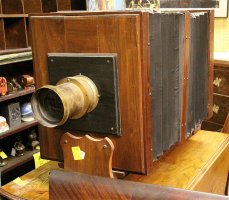jrista said:Canon started doing that fairly early on in the digital 2k and 4k cinema industry. There are competitors, but none of them were extremely well established like the MFD companies. If Canon or Nikon try to break into MF, they have to produce not only a sensor or a camera, but an entire photographic system while concurrently fighting against a LONG established set of companies and very strong customer loyalties. To really compete, they would need to make their system digital-back compatible with the existing brands...who knows what the hurdles there would be (assuming the existing MFD competitors don't hold all the rights and have the ability to block such a move from Canon.)
I honestly don't see that as the same thing as what they did with Cinema. They already had a lot of the technology they needed to move into Cinema...they had been doing both video DSLR and Camcorders for a long time before they started building their Cinema EOS line.
A digital back with Canon's menu format and functionality to use RT flashes? In principle it could work, but it probably would have happened by now if it was going to do so.
Jim
Upvote
0

